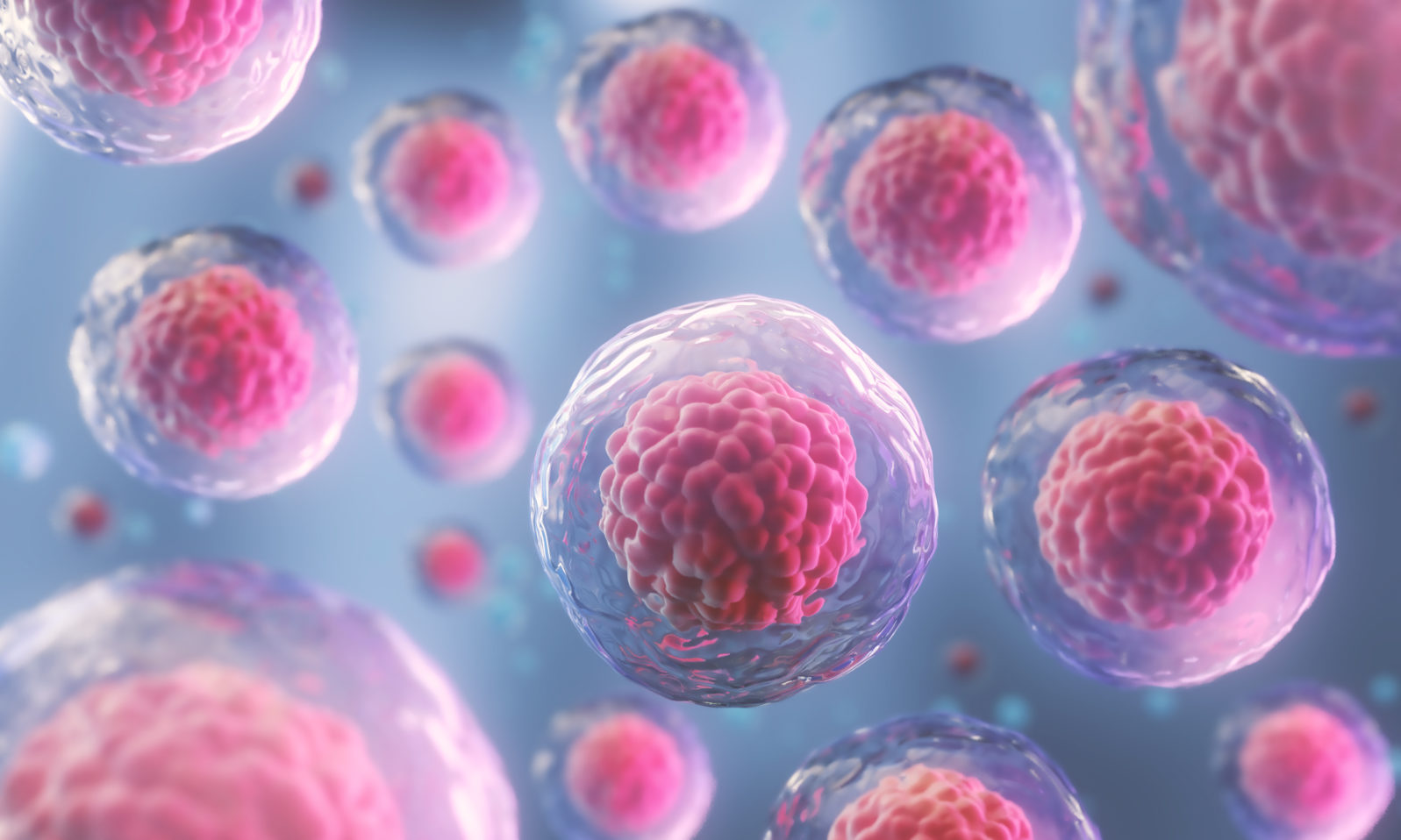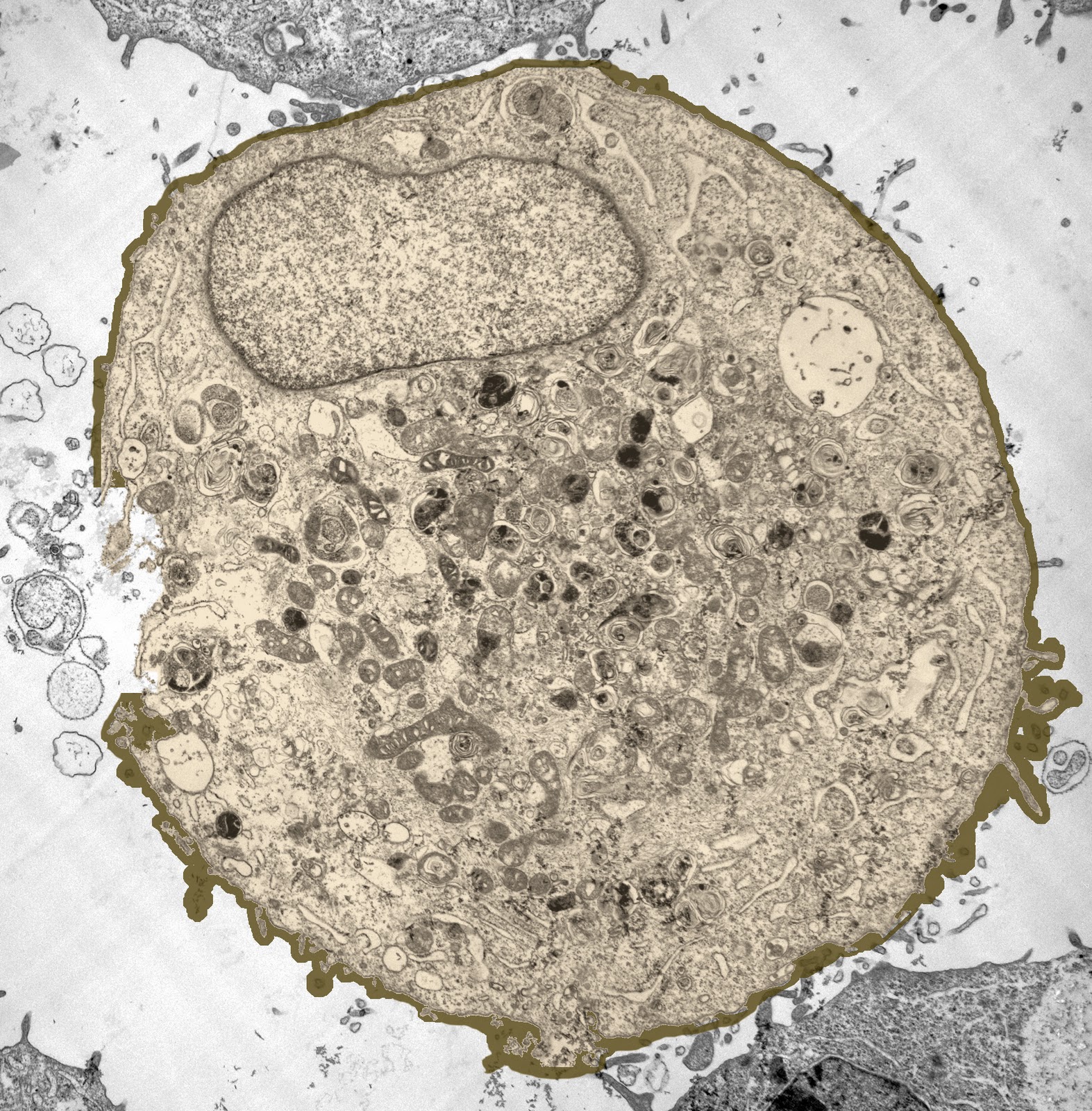
Are we really made up of microscopic cells? conspiracy
Open-access 3D images of whole cells and tissues with combined finer resolution and larger sample size are enabled by advances in focused ion beam-scanning electron microscopy.

Premium AI Image Human cell microscope
Observing human cheek cells under a microscope is a simple way to quickly view and learn about human cell structure. Many educational facilities use the procedure as an experiment for students to explore the principles of microscopy and the identification of cells, and viewing cheek cells is one of the most common school experiments used to teach students how to operate light microscopes.

Electron Microscopy of a normal human cell, The cell membrane, nucleus
This includes human cells and many other types of cells that you will be studying in this class. The microscope you will be using uses visible light and two sets of lenses to produce a magnified image.. Biologists typically use microscopes to view all types of cells, including plant cells, animal cells, protozoa, algae, fungi, and bacteria.

Premium AI Image Human cell microscope
Scientists and technicians often use light microscopes to study cells.. Human Cheek Cells Figure 3. Human cheek cell at 400x zoom. The human cheek is lined with epithelial cells. They will be used today for you to observe a eukaryotic animal cells and its nucleus. You will scrape and stain a sample of your cheek cells with the dye methylene.

Human Cell Under Microscope HighRes Stock Photo Getty Images
The type of cell that accounts for 90-95 percent of your skin are keratinocytes. Instead of being round and blob-like, their shape has a flake-shape than anything else, creating a mosaic of skin. They grow and divide in the basement membrane, a thin layer that separates your epidermis from your dermis. There they push toward the top of your skin.

Are the Brain Cells in a Dish That Learned Pong Conscious? Mind Matters
the cell structure under the microscope. cell, the waves are still "in phase"; this is no longer the case once they have passed through the various cell components. It is not possible for the human eye to rec-ognize these phase shifts. It can only distinguish between different intensities and colors. The phase contrast method

Cells_under_a_microscope.JPG 2218×2216 pixels cells Pinterest
A Guide to Microscopic Structure of Cells, Tissues and Organs Robert L. Sorenson Table of ConTenTs ChapTer 1 InTroduCTIon and Cell ChapTer 2 epIThelIum ChapTer 3 ConneCTIve TIssue ChapTer 4 musCle TIssue ChapTer 5 CarTIlage and bone ChapTer 6 nerve TIssue ChapTer 7 perIpheral blood ChapTer 8 hemaTopoesIs ChapTer 9 CardIovasCular sysTem

Scientists developed a microscope that fits in a needle to get a real
A cell is the smallest living thing in the human organism, and all living structures in the human body are made of cells. There are hundreds of different types of cells in the human body, which vary in shape (e.g. round, flat, long and thin, short and thick) and size (e.g. small granule cells of the cerebellum in the brain (4 micrometers), up to the huge oocytes (eggs) produced in the female.

Premium AI Image Human cell microscope
A microscope is an instrument that magnifies objects otherwise too small to be seen, producing an image in which the object appears larger. Most photographs of cells are taken using a microscope, and these pictures can also be called micrographs. From the definition above, it might sound like a microscope is just a kind of magnifying glass.

10,151 Human Cell Under Microscope Images, Stock Photos & Vectors
Muscle tissue is made up of cells that have the unique ability to contract or become shorter. There are three major types of muscle tissue, as pictured in Figure 5.3.14 5.3. 14: skeletal, smooth, and cardiac muscle tissues. Skeletal muscles are striated, or striped in appearance, because of their internal structure.

blood cells, cells, human, electron microscope, scan, blood
The optical microscope is a useful tool for observing cell culture. However, successful application of microscope observation for culture evaluation is often limited by the skill of the operator and/or the lower reproducibility of visual evaluations. Automatic imaging and analysis for cell culture evaluation helps address these issues, and is seeing more and more practical use.

Human Cells Under Microscope HighRes Stock Photo Getty Images
On 3 July 2018, the first set of 3D images of living and fixed human cells were obtained by the FLUMIAS-DEA microscope on the ISS and transmitted to a ground station. The acquisitions lasted 11 days and the images were examined for high-resolution image quality and actin cytoskeleton dynamics.

Electron microscope, Microscopy, Scanning electron microscope
This fluorescence light micrograph shows two important support cells (glial cells) of the human brain. The green splash is a microglial cell, which responds to immune reactions in the central nervous system. Microglial cells recognize areas of damage and inflammation and swallow cellular debris. The larger orange shape is an oligodendrocyte.

February 2011 Cell As a Unit of Life
Light Microscopes. To give you a sense of cell size, a typical human red blood cell is about eight millionths of a meter or eight micrometers (abbreviated as eight μm) in diameter; the head of a pin of is about two thousandths of a meter (two mm) in diameter. That means about 250 red blood cells could fit on the head of a pin.

Full HD. Many living dividing cells under microscope, magnification
In Figure 3.1.2 3.1. 2, only one edge of the tissue slice has epithelial cells. In Figure 3.1.2 3.1. 2 A that edge is indicated with an arrow, but when looking at a specimen under a microscope, you have to figure out for yourself where the edge with the epithelial cells is. Figure 3.1.2 3.1. 2: A slice of a trachea.

4.2 Discovery of Cells and Cell Theory Human Biology
Imaging technologies drive discovery in cell biology. Innovations in microscopy hardware, imaging methods and computational analysis of large-scale, complex datasets can increase imaging.